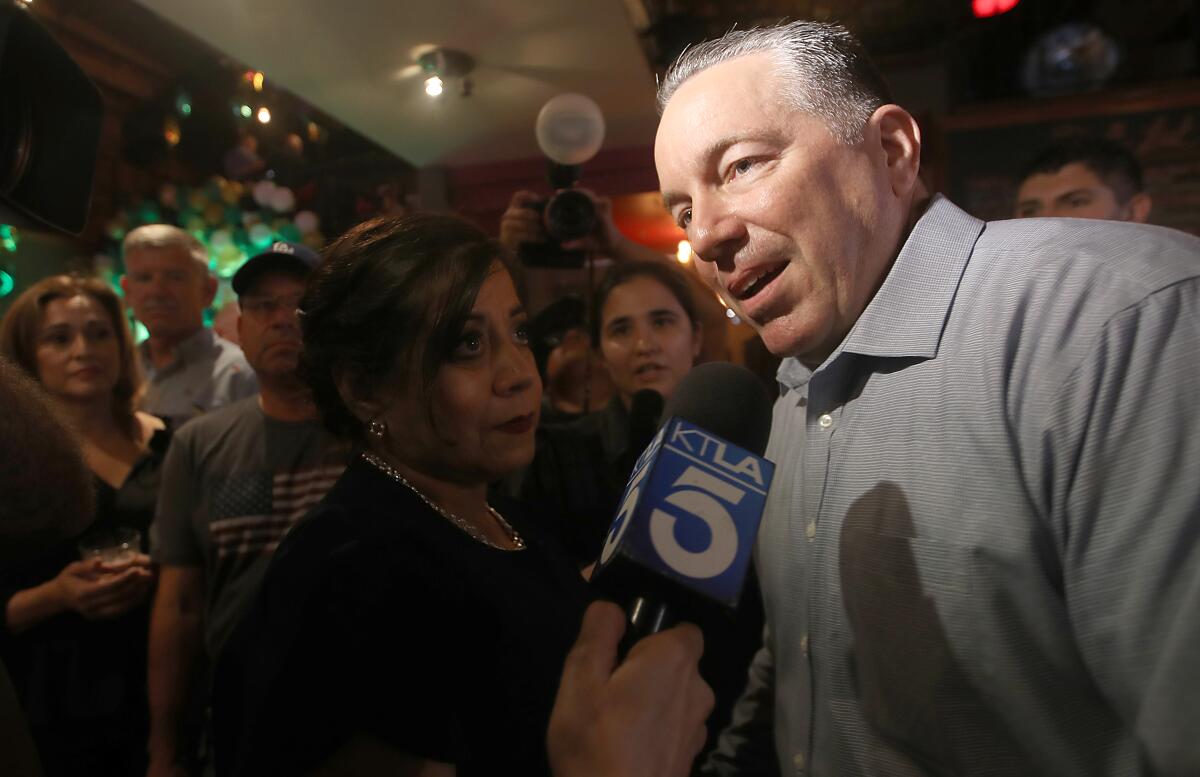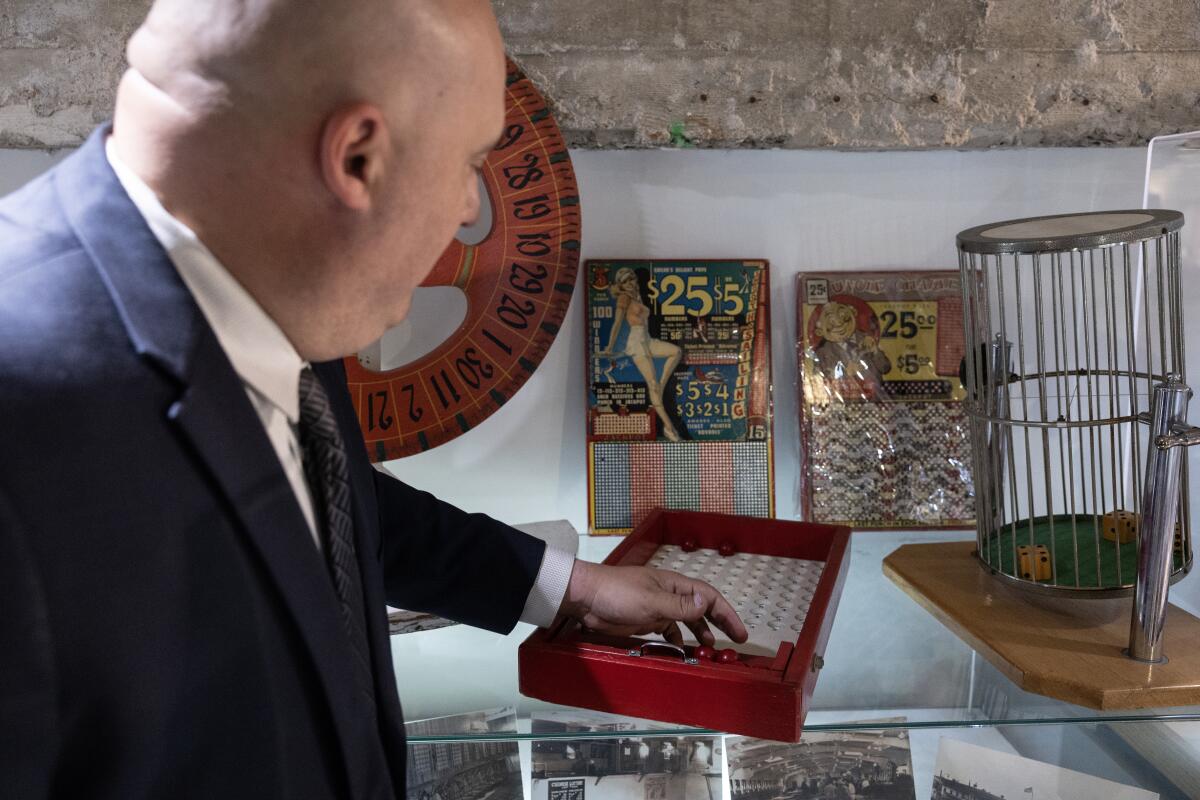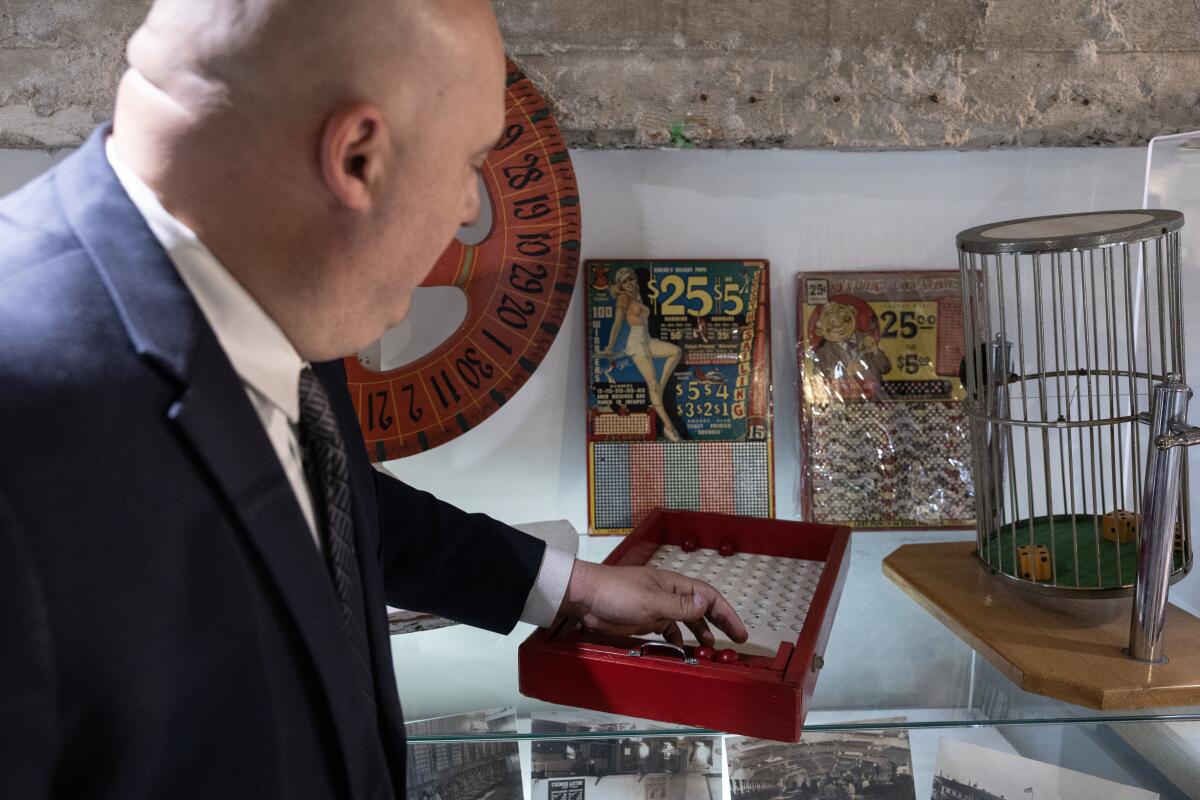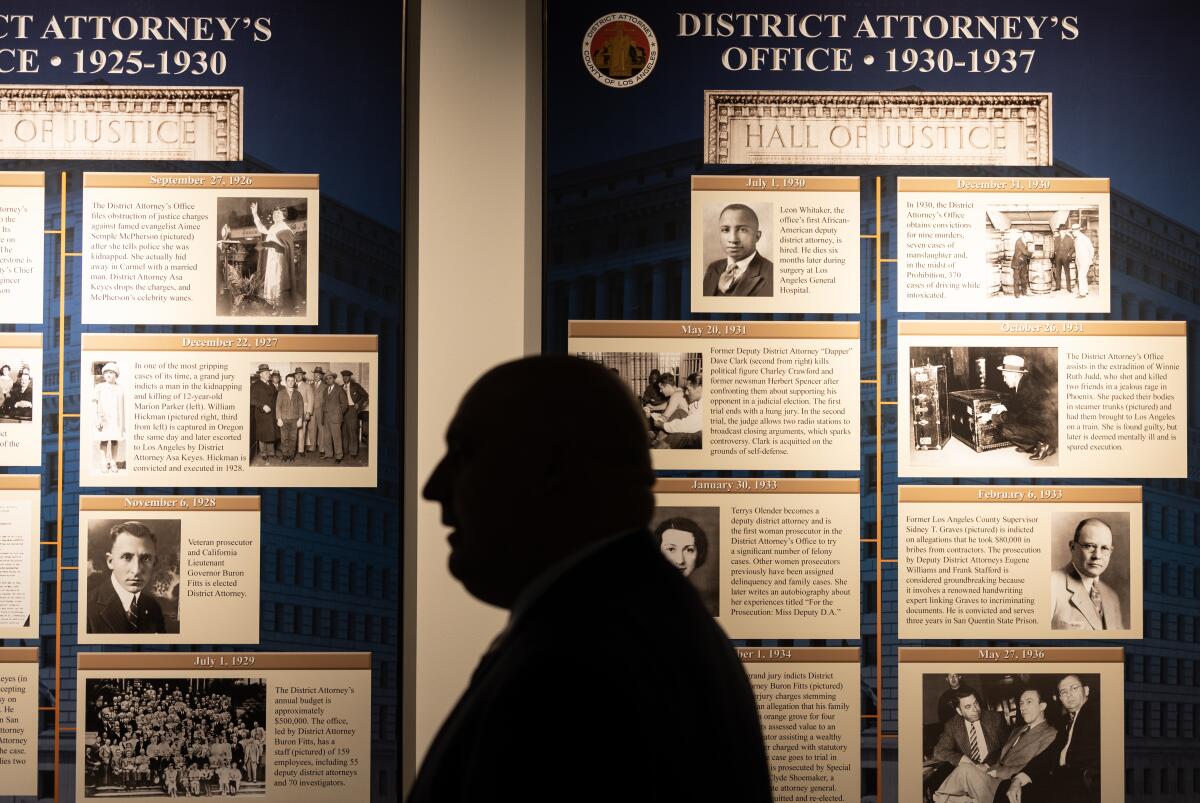Insults already flying in crowded race for L.A. County sheriff
The race for Los Angeles County sheriff is already heating up — even with the primary not scheduled until next June. Six candidates have officially entered the field to unseat Robert Luna, with the early challengers slinging barbs, probing the incumbent’s political weaknesses and setting the stage for a heated campaign in the coming months.
Most vocal and well-known among the contenders is former Sheriff Alex Villanueva, who lost to Luna in 2022 and is now vying for a rematch. He is among a field of current and former lawmen who have criticized Luna’s time in office as ineffective, uninspiring and opaque.
Luna told The Times he deserves to keep his job through 2030, arguing voters should choose stability as Southern California prepares to host major events in the coming years.
“The last thing we need is more inconsistency in leadership as we start working toward the World Cup and the Olympics,” Luna said.
Villanueva registered a campaign committee in July and has since leveraged his ability to draw attention like few others in L.A. politics.
But the political dynamics have changed since 2022, when Joe Biden was president and Villanueva was still in charge of California’s largest law enforcement agency. Now, President Trump has ratcheted up political pressure on L.A., and last year, Janice Hahn defeated Villanueva in the primary for her county supervisor seat by a nearly 30-point margin.
Through it all, Sara Sadhwani, an assistant professor of politics at Pomona College, said it seems as though “Luna is generally liked, perhaps because he has brought a steady hand to the department” after what she termed “upheaval” under Villanueva.
The former sheriff has been heavily criticized for his combative personal style, pursuit of political vendettas and his handling of investigations into so-called deputy gangs deputies and other alleged misconduct.
“Does Villanueva have a lane to come back? I don’t think so,” said Sadhwani.
Luna launched jabs at his opponents, with the sharpest reserved for his predecessor.
“Not one of those individuals that is running comes close to the experience that I have and the accomplishments that I’ve had so far,” Luna said. “There were a lot of controversies and scandals with the previous sheriff that, again, eroded public trust.”
And yet, there’s no conversation about the sheriff’s race that won’t mention Villanueva, whose name recognition runs deep across L.A. County.
Villanueva told The Times he’s “eager to get back in the saddle,” especially now, when “there are prosecutors ready to prosecute,” a nod to the tough-on-crime stances of Acting U.S. Atty. Bill Essayli and L.A. County Dist. Atty. Nathan Hochman.
Former Los Angeles County Sheriff Alex Villanueva talks with reporters at an election night gathering in Boyle Heights on June 7, 2022, when he was defeated by Robert Luna.
(Luis Sinco/Los Angeles Times)
Villanueva had strong words for his 2022 opponent.
“The status quo is failing miserably the people of L.A. County,” he said. “I just can’t believe what Luna’s done to the organization I’ve spent my entire adult life in.”
Others jockeying for contention are pitching themselves as offering a breath of fresh air.
Lt. Eric Strong, who has served over 30 years in law enforcement and was seen as the most progressive of the 2022 candidates, is throwing his hat back in the ring after coming in third in that year.
“What really got me interested in running is seeing the continued failed leadership within the department,” Strong said in a recent interview. “Nothing’s changed. … Honestly Luna’s just a quieter version of Alex Villanueva.”
Then there’s Oscar Martinez, a proud immigrant and U.S. Marine Corps. veteran who made a career at the sheriff’s department after multiple tours in Iraq and Afghanistan.
Andre White, 34, is the youngest candidate. A Compton-raised detective with 11 years at the department, he promises to take a “community-oriented approach” if he’s elected sheriff.
Brendan Corbett served as the assistant sheriff for custody operations under Villanueva.
Lastly, there’s Capt. Mike Bornman, who has decades of experience in the department and lists a “comprehensive forensic audit” of its books as the top priority on his campaign website.
In a recent phone interview, Bornman said he considered Luna a “vulnerable” incumbent.
The sheriff has faced criticism from opponents and advocates who say he has done too little to improve jail conditions, leading to a surge in inmate deaths this year. Like Villanueva, he has also faced pressure to do more to root out deputy gangs and boost recruitment.
“The morale is as bad as I’ve ever seen it,” Bornman said. “Something has to change,” he added. “I don’t think the department can take another four more years with the guy.”
Political analysts cautioned that the race is sill wide open, with one expert declining to speculate during the “embryonic” stages as the field takes shape.
Anything can happen in the eight months remaining before the primary, but Sadhwani said one thing is clear: Unseating the current sheriff won’t be easy.
“I will say in general that an incumbent such as Luna typically has the upper hand and challengers need not only cause but the campaign fundraising ability to get their message out — no small feat in a county as large as L.A.”
So far, fundraising has been mostly anemic, at least according to the county’s most recent comprehensive campaign finance data available for the sheriff’s race, which covers only Jan. 1 through June 30.
Over those six months, Luna raised about $393,000; Bornman brought in nearly $23,000 of contributions; Martinez brought in about $6,700; and White raised less than $3,000. The other three candidates had not even declared their candidacies by June 30.









